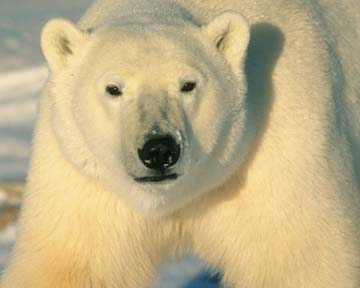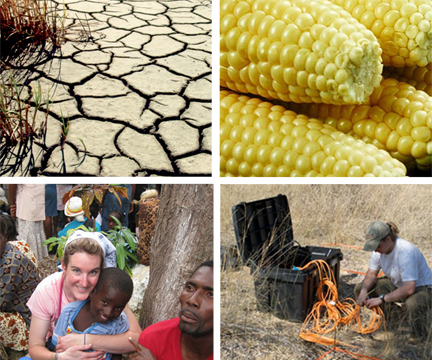The leaf is the primary site of photosynthesis in plants.
Click on image for full size
Image has been released into public domain (found on wikipedia.org).
Photosynthesis
Photosynthesis is the name of the process by which
autotrophs (self-feeders) convert
water, carbon dioxide, and solar energy into sugars and oxygen.

It is a complex chemical process by which plants and other autotrophs create the energy needed for biological life. The equation above shows the production of CH2O (formaldehyde), only one of the many carbohydrates that actually form.
The oxygen that is a byproduct of the photosynthesis reaction leaves the plant through the stomata (openings between guard cells on the surface of a plant's epidermis that let in carbon dioxide and let out oxygen). This oxygen is essential in supporting life on Earth.
It is estimated that a full-grown, healthy maple tree has about 500 square feet of leaves weighing about 500 pounds. This represents a total chloroplast surface area of about 140 square miles. Believe it or not, a single maple tree can make two tons of sugar on one good sunny day! (The Way Life Works, Hoagland and Dodson) That's a lot of sugar!
Early bacteria converted solar energy by a different photosynthetic reaction, one which requires an anaerobic environment (one without oxygen), but which produces water as a waste product. The photosynthetic activity of this early bacteria was an interim step in building the oxygen content of Earth's early atmosphere.
The reverse process of photosynthesis is known as respiration. Respiration occurs in all organisms.
You might also be interested in:

Autotrophs are organisms that produce organic compounds from an inorganic source of carbon (carbon dioxide) given a source of energy. If the source of energy is the reactions of inorganic chemical compounds,
...more
Respiration is the name of the general process by which living organisms convert sugars and oxygen into biochemical energy. The process occurs in all organisms, including animals, plants, fungi, and bacteria
...more
"Though we often take the plants and trees around us for granted, almost every aspect of our lives depends upon them. They feed us, cloth us, absorb carbon dioxide, provide us with oxygen, and give us
...more
Life on Earth obtains energy in many types of formats. The two main process are photosynthesis and respiration. Photosynthesis is the name of the process by which autotrophs (self-feeders) convert water,
...more
Photosynthesis is the name of the process by which autotrophs (self-feeders) convert water, carbon dioxide, and solar energy into sugars and oxygen. If it weren't for the photosynthetic activity of early
...more
Biomes are large regions of the world with similar plants, animals, and other living things that are adapted to the climate and other conditions. Explore the links below to learn more about some of the
...more
Eventually, as with the development of photosynthesis along sulfur and methane pathways, where sulfur and methane products are produced, photosynthesis along the oxygen pathway, where oxygen is produced,
...more















